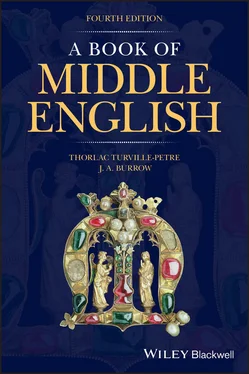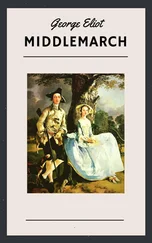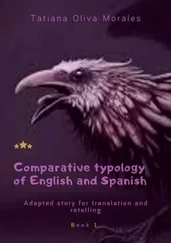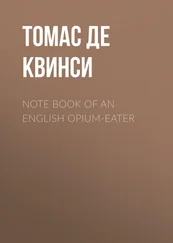Trevisa thus makes the point that there is no one right way to make a translation: the nature of the translation must depend upon its purpose and the nature of the readership. A translation may be in prose or in verse; thus it may be more or less literal (but what does a ‘literal’ translation consist of?); there is no such thing as a perfect translation, for a text cannot be transposed intact from one language into another.
8.2 Words and Their Meanings
A translator, whether from German or Japanese to English, or Middle English to Modern English, must take an important consideration into account: a word in the source language is rarely exactly synonymous with another in the target language. That is to say, the range of associated senses of a word, its semantic field, does not map precisely onto a word in another language. A glossary or concise dictionary may give a different impression. For example, the glossary to this book has the following entry: ‘ stout adj . bold 5/184, 293 [OF (e)stout ]’. That conveys a certain amount of information in a compressed form: that the adjective stout , which is a borrowing from French, can be translated as ‘bold’ in a couple of instances in Sir Orfeo : Orfeo’s thousand armed knights are ‘stout and grim’, and similarly the fairy knights are ‘Of cuntenaunce stout and fers’. Consultation of comprehensive historical dictionaries that display a word’s semantic field at different periods provides a much richer understanding of stout . From the Oxford English Dictionary we can discover that the earliest records of stout in its common current sense of ‘fat’ date from as late as the nineteenth century, so that sense cannot be relevant to Middle English examples. In its entry for stout(e adj., the Middle English Dictionary divides the senses under six main headings, each subdivided. Some of the applications of the word are positive: (1) ‘bold’ and related senses; (4) ‘noble, splendid’ and similar senses; (5) ‘strong’, of both animate and inanimate objects. But some senses are negative: (2) ‘cruel, violent’; (3) ‘proud, arrogant’. In its printed edition, MED ’s entry runs over two pages, quoting a great many examples from the beginning of the fourteenth to the end of the fifteenth century.
If we look again at the two examples of the word in Sir Orfeo in their contexts, we can see that ‘bold’ is not the only translation possible, and that some of the related meanings of stout might be brought into play. In line 184 stout is paired with grim , a word inherited from Old English: citations in MED reveal that grim is used of the Devil ‘grisely and grym’, of dogs and lions, as well as of warriors and battles. So perhaps a translation conveying hostility, such as ‘fierce’, would be more precise in line 184, though the positive senses ‘strong’, even ‘splendidly arrayed for battle’, are also appropriate parts of its semantic range. In line 293 it is the appearance ( cuntenaunce ) of the fairy knights that is ‘stout and fers’, so that MED cites this instance under 1(c) ‘of the countenance, eyes: reflecting a courageous spirit, bold’, also citing a description of the ‘stout visage’ of Achilles that showed that ‘he was no womman’.
There is a third instance of stout in Sir Orfeo : the fairy castle has a hundred towers that are ‘Degiselich and bataild stout’ (360), translated in our footnote as ‘Wonderful and with strong battlements’. In this case stout is an adverb, and a more literal translation would be ‘strongly fortified with battlements’. Quoting this line, MED glosses ‘richly, splendidly’, which is fair enough, but misses the idea of strength to withstand attack, as recorded in examples of the adjective (5(b)). Any word‐for‐word translation is forced to choose one of a complex of senses, inevitably ignoring others.
The glossary is unable to display the semantic field of a word as a dictionary can do. Furthermore, a selective glossary, as the one in this book, does not record words in their modern senses, so that for example the entry for stronge adj . lists one instance where strong means ‘great’, but not the many other instances where it has its current meaning. To save space, meanings given in the footnotes are not repeated in the glossary.
Work began on the Oxford English Dictionary in 1857 under the editorship of James Murray. What was then envisaged as a ten‐year project was finally completed in 1928, published in ten huge volumes as A New English Dictionary on Historical Principles ( NED ). Five years later the dictionary was reprinted with a supplement, and renamed the Oxford English Dictionary . Four more supplements were published between 1972 and 1986. An integrated and much expanded second edition was published in twelve volumes in 1989. From 2000 the OED has been available online to libraries and other subscribers at http://www.oed.com/. Entries are being progressively revised, with the date of the revision stated. It follows that, while many of the entries include up‐to‐date material, others are essentially as they were compiled in Victorian times. OED aims to give a complete history of a word, though Old English words are only recorded if they survived into Middle English.
The first fascicle of the Middle English Dictionary was published by the University of Michigan in 1954, and the dictionary was completed in 2001. MED is now available freely online at https://quod.lib.umich.edu/m/middle-english-dictionary/dictionary. It covers texts composed between about 1150 and 1500. The Middle English citations in the OED formed the nucleus of the collection, but the MED , which runs to 115 fascicles and 15,000 pages in its print edition, is a much more comprehensive record of Middle English than the OED .
The electronic editions make piecemeal revision possible, and furthermore they are much easier for the reader to use and explore. The wide variation in spelling in Middle English means that finding a word in the print edition of MED can be a bit of a challenge, but the online version allows a search of any of the headword forms, so that a search for stought (or even the misspelling strout ) will come up with the entry for stout(e . Alternatively, if one knows the modern form of a word, the OED entry provides a link to the MED . Definitions of a word are ordered in an attempt to show its semantic development, though this is not always clear. Thus sense 5 (a) of stout(e in MED is given as: ‘Of a person, an animal: strong, sturdy’. As an instance of this is the following quotation is cited:
a1425(c1385) Chaucer TC (Benson‐Robinson) 5.1454 : His drem he tolde hire er he stente, And hire bisoughte assoilen hym the doute Of the stronge boor with tuskes stoute.
This gives first the approximate date of the manuscript chosen, a1425, i.e. before ( ante ) 1425, and then in brackets the date of the composition of the text, circa 1385. The text is identified as Chaucer’s Troilus and Criseyde , as in the Benson–Robinson edition, i.e. The Riverside Chaucer , book 5, line 1454. Clicking on the bibliographical reference brings up a new page with a mine of information on the manuscripts of Chaucer’s poem, their dates, references to dialects as determined by LALME , editions and facsimiles, as well as external references to the poem in various indexes such as The Digital Index of Middle English Verse . The format in OED follows a similar system, explained in detail at https://public.oed.com/blog/dating-middle-english-evidence-in-the-oed/.
Читать дальше












